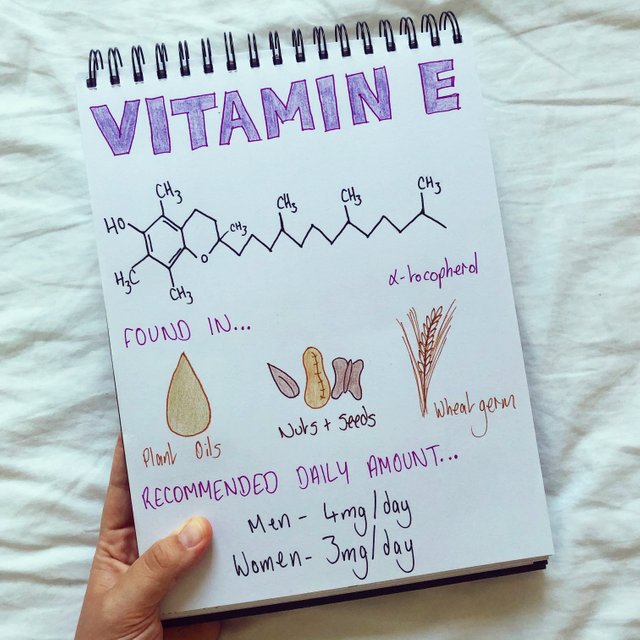
🔸What is it?
🔸Vitamin E consists of two subgroups, tocopherols and tocotrienols, that vary by saturation and the number/position of methyl groups on the side chains
🔹What is it for?
🔹Vitamin E is a fat soluble antioxidant meaning it ‘absorbs’ harmful free radicals that damage cells in the body. There is increasing evidence to suggest vitamin E has a protective effect against heart disease by protecting low-density lipoproteins against oxidation and reducing inflammation!
🔸Food sources?
🔸Polyunsaturated plant oils eg. Olive oil, canola oil, sunflower oil. Nuts and seeds. Whole-grains eg. wheatgerm and cereals.
🔹The NHS recommends a daily intake of 4mg for men and 3mg a day for women
🔹Deficiency is rare but can cause erythrocytes haemolysis (break down of red blood cells) and neuromuscular dysfunction (loss of coordination and slow reflexes)
Ref: Whitney and Rolfes, Understanding Nutrition 14th Ed.
https://www.nhs.uk/conditions/vitamins-and-minerals/vitamin-e/
Thanks for sharing, shame that the community & curator can’t see and encourage you to post more of your scientific blog about nutrition. @steemitblog
Downvoting a post can decrease pending rewards and make it less visible. Common reasons:
Submit